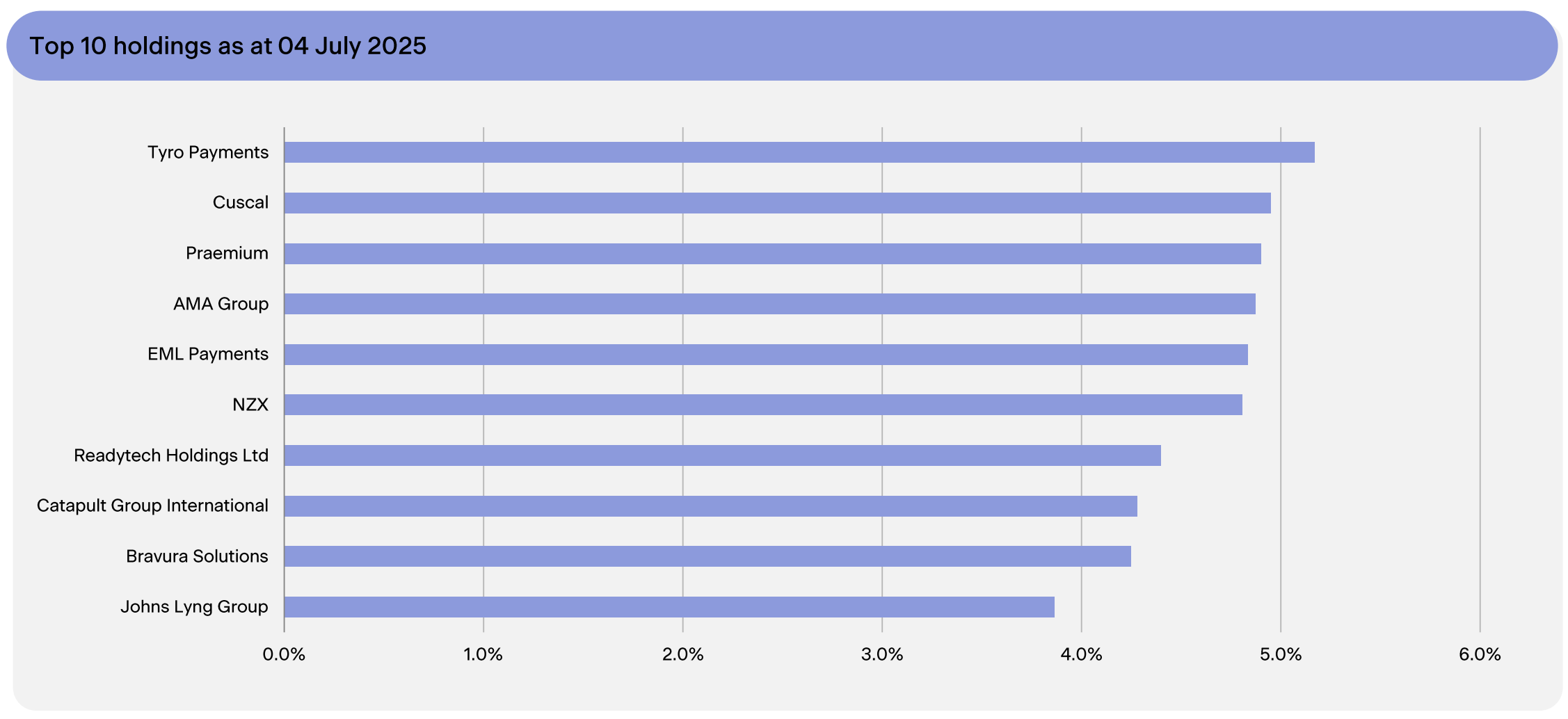Forager: Cashed up ready to reload after bumper year
Reporting season is on our doorstep and if the lead from the US market is anything to go by we should be ready for more volatility.
Following a bumper 12 months for the Forager Australian Shares Fund, Steve Johnson and his team have significantly reduced holdings in top contributor Catapult (ASX: CAT), raised cash holdings and conducted extensive research on a selection of companies they are hoping to snap up and add to the portfolio.
Forager’s Australian Shares Fund delivered an impressive 31% return in FY25 outperforming the Small Ordinaries Accumulation Index by over 17%. Nearly 12% of Forager’s one-year return came from sports monitoring business Catapult, which surged over 200% for the year.
While no fund manager will knock back bumper returns, Johnson says he gets more satisfaction from the contribution made by other, less sexy, names in the portfolio.
If you strip out the boost from Catapult, Forager’s returns for the year still come in at above 20%, comfortably ahead of the 12% return of the benchmark and driven by an eclectic mix of businesses such as:
- Bravura (ASX: BVS)
- AMA Group (ASX: AMA)
- Motorcycle Holdings (ASX: MOT)
- Recently acquired PointsBet (ASX: PBH)
Johnson says he has significantly reduced the fund’s position in Catapult from ~10% of the portfolio closer to 4%.
“That part of the market has been hot. It has been a great stock pick in the right part of the market.”
“We want to use our flexibility and our adaptability to make sure that we’re well positioned for them not working and other stuff working better over the next 12 months.”

Repositioning for when the hot stuff isn’t flying
Johnson says the focus now is on capitalising on this period of strong performance for investors in his fund and he expects the upcoming reporting season to present opportunities to add new ideas to the portfolio.
Much has been written about small-cap investors positioning themselves for future index inclusions with a view to riding the wave of money that is required to start buying these companies. Johnson says opportunities exist at the other end of the spectrum as companies are spat out of an index and fall off investor radars.
Johnson argues that the gap between companies the market loves and companies the market hates is as wide as ever. While many investors are focused on companies that beat expectations, Johnson has his eye on a list of stocks that could disappoint, creating a moment of capitulation allowing him to buy at depressed levels.
It’s a pattern that has been playing out in US markets and Johnson points to a company that missed expectations by 1% resulting in a 25% sell off in the stock.
“We own a company in the US that downgraded its guidance from 10–12% to 10–11% and the share price went down 25%.”
“I think we’re seeing more of that. The computers are set up to sell if it is a miss, so I’m expecting plenty of volatility here.”
IDP Education (ASX: IEL), OFX Group (ASX: OFX) and Nuix (ASX: NXL) are three examples of former darlings that have lost favour with investors with share prices plumbing multi-year lows. Johnson says at this end of the market he is looking at a long list of ideas that can make their way into the portfolio in small weightings.
While index inclusion is one way for stocks to find favour, it’s not the only route. The obvious path is for these businesses to execute a turnaround and become more attractive, there’s also the prospect of M&A activity which has been steadily bubbling away.
Johns Lyng Group (ASX: JLG) and Tourism Holdings (ASX: THL) are both examples of companies that are in the crosshairs of private equity.
“There’ll be more takeovers. At this smaller end of the market you either need to be able to grow out of your illiquidity problems and turn yourself into a business that people are going to pay one of those full prices for, or you’re a very serious takeover candidate.”
“There’s lots of money floating around, it’s not like you need the public markets for access to capital.”
An evolving strategy
Forager’s Australian Share Fund has been running since 2009 and establishing a track record of outperformance against the Small Ords. It hasn’t all been smooth sailing with meaningful drawdowns in 2019 and 2022. Markets are dynamic, history doesn’t repeat and Johnson has used these difficult times to refine Forager’s approach.
The first point Johnson makes is being willing to take money off the table through disciplined exits. Not holding stocks just because they are going up but being willing to exit when your thesis has played out.
A recent exit from Gentrack (ASX: GTK) and the down-weighting of Catapult are examples of this process in action.
Liquidity also plays a key role enabling Forager to be flexible and take advantage of during periods of distress.
“It’s not just about making sure the fund has enough liquidity to meet redemptions but making sure that we have enough capacity to take advantage of these downturns.
“The liquidity of this portfolio, the way we measure it, is twice as good as it was three years ago. That I think will be an important change.”
The final point is remaining nimble in both the approach to markets and by keeping the fund at a size that allows Johnson to take advantage of new information in portfolio holdings.

Forager’s Top 10 holdings as of early July are shown in the image above but with a flurry of new information coming to market and the computers fired up, the portfolio composition is far from set and forget.
“We’ve got the capacity to both up and downsize everything here quite meaningfully depending on what happens.”
1 topic
11 stocks mentioned
1 fund mentioned
1 contributor mentioned

